A note on Thanumalayan Siva Temple for which Suchindram is famous for
‘Sa Re Ga Ma Pa…..’ Musical Pillars of Suchindram Temple – It’s famous across the world. In the stone pillars of decorative complex (Alankara mandapam) of the Suchindram Temple, with finger strokes, stones play the octaves. Music from stone – one among the wonders of the temple, it is linked to mythology and Tamil history too. Known for its quality of workmanship in stone, Suchindram is not just one temple across the world with magic pillars producing octaves. Vijaya Vitthala temple of Hampi, Madhurai Meenakshi temple and Nellaiyappar temple of Tirunelveli also have similar musical pillars. There are four musical pillars carved out of a single stone each with 18 feet height, and the design and architecture and everything associated with it is spectacular to watch and visualize through five senses of course. Through this column let us walk through the corridors of famous Suchindram Temple.
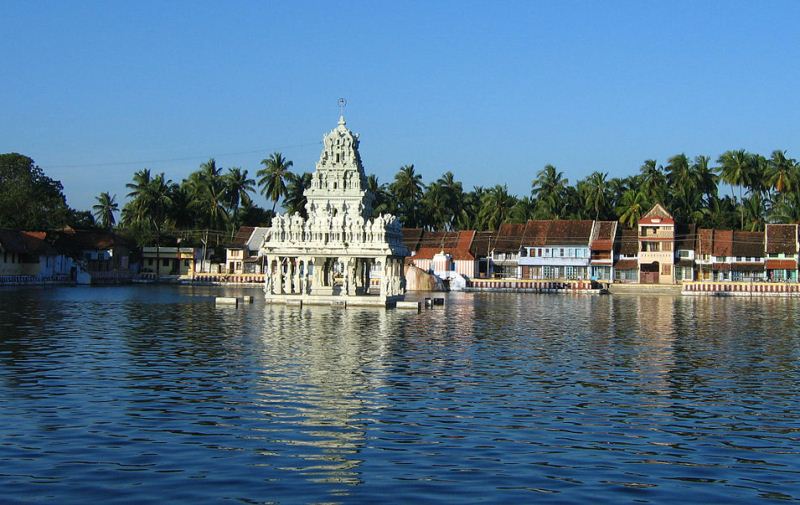
Suchindram temple is situated in Kanya Kumari District of Tamil Nadu
The famous Thanumalayan Temple, also called Sthanumalayan Temple and Suchindram temple is located in between Nagarcoil and Kanya Kumari, which was once a part of old Travancore kingdom of Kerala. That may be the reason why the interiors of the temple have some shades of Kerala temple tradition. Sea stays next near to temple, and the temple holds some glorious stories and reminiscences of royal rule of yesterdays.
Devendra was cursed for the lust of women, and later he washed away his sin to purify himself at Suchindram, as per mythological tales. Trimurti appeared as saints, asked Anasooya to serve food as naked if she wants them to accept the meals. She washed her husband’s feet with water and sprinkled it on them to change them to babies. Then she breast feed the kids as naked. Suchindram holds the tradition of Anasooya and her devotion to husband. When Indra committed a sin, the same land granted him mukti. To err is human, but if he wants to correct it, he can visit Suchindram. He can also take oath that he won’t repeat the mistake again, and return as a good man with virtue.
The place was once a forest named Njanaaranyam
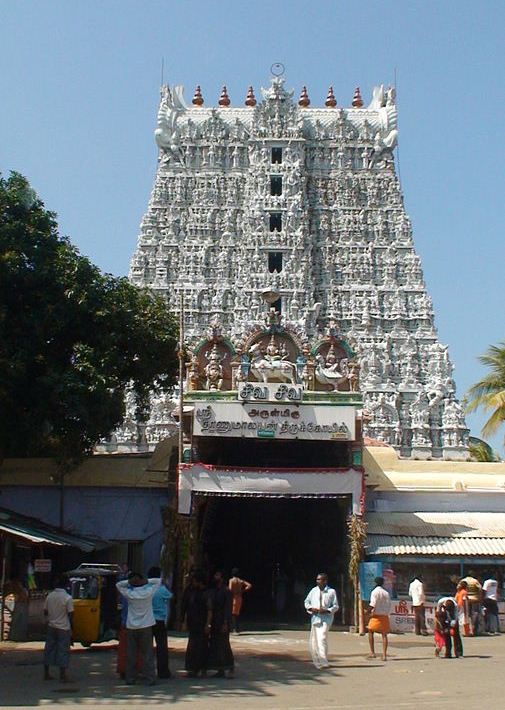
The ashram of saint Atri was situated in the dense forests of Njanaaranyam. Indra got attracted to Ahalya, the wife of saint Gautama. When the saint was out for morning prayer, Indra descended to Earth in the guise of Gautama Rishi and entered their hut. On return, Gautama saw Ahalya and Indra together and cursed both. Ahalya changed to a stone and she got rid of the curse with the touch of Rama’s feet. Indra attained Moksha in the forests of this place, which holds the divinity of Trimurti.
When a tree was felled in a small property of Suchindram, blood was seen along a siva linga present inside the tree. This place is considered as Sree Moola Sthanam of this famous temple, and now it comes under the governance of Kanya Kumar Devaswom board.
Suchindram temple is a wonder created on stone. If you take Kizhakke Nada (east side) to enter the temple and walk towards south, on the left side you can see a narrow path and a statue there. When you travel through streets of south, you can see Vinagaya temples at the end, followed by Sree Krishna temple, Chithambara Nadan, Trimurti, Rama etc. It’s believed that 33 crore gods as per Hindu mythology live here. The construction of the temple was started in 5th century and work completed in 20th century. It’s a stone wonder created with 403 feet length and 233 feet width.
In front of small Rama temple, 22 feet (6.7 m) high Hanuman’s statue is placed with folded hands. This statue was buried under soil during Tipu invasion in 1740 and was later excavated from mother earth during 1930 and reinstalled in front of Lord Rama. When the soil near the temple was removed, this statue was found buried there. This Hanuman statue is carved of a single granite block and is one of the tallest statues of its type in India. Praying Hanuman in front of Lord Rama is growing everyday – as per beliefs. While Hanuman bows before his Lord, Rama prays before Trimurti.
Exploring architectural skills of yesterdays
The royal gopuram is spread to 7 steps. This Rajagopuram is different from normal temple gopurams, in terms of wall paintings inscribed here. In the first two storeys, Ramayana and Mahabharata stories are depicted, and in the rest 5, the glorious tales of Suchindram and the temple. The social life of that period and equipment used by people centuries ago are well structured as paintings in the 5 storeys of the gopuram. Now these paintings are remarked as valuable historical documents.
Lord Siva is the presiding deity. Yet Trimurti Sankalp has been evoked in the trees around, giving lessons of conserve the environment and eco system. As per popular belief, Cassia fistula, Koovalam (bael) and basil appeared at moolasthanam of the temple together, which indicates the presence of Trimurti at a place. For the same reason, trees which are believed to carry a divine power are worshipped here.
Yet another wonderful art piece is a sphere revolving inside a dragon sculpture. The dragon figure was curved out of a single stone, and it’s still a puzzle how such a big sphere was built in his face. Facial expressions of 33 crore gods are also curved here, and each one differs in expressions. Ganapati’s installation is most important among all. Neelakanda Vinayaka and female avatar of Ganapati known by the name Vigneswari are very rare idols installed in this temple. Ravana playing Rudraveena is also a unique statue.
Hanuman Jayanti is celebrated as grand event in Suchindram temple. Ladu is given as offerings to the lord, and also distributed free to devotees. For that purpose, lakhs of ladu are made every year. Bengal gram, sugar and cardamom are mixed together and deep fried in coconut oil. For the same reason, the whole temple premises will be filled with the pleasant aroma of sweet ladus.
When a lottery scheme introduced for the first time in India by Ayilyam Thirunaal Maharaja to raise funds for renovation
Vattapalli Madam holds the right to perform all rituals of the temple. During the old glorious yesterdays, their madam (ancestral home) was 32 Kettu, where Naalukettu is quite common among Brahmin homes. Now, the ancestral home has the face of a Nalukettu only. Doctor N. P. Sharma currently serves as the Karanavar of this madam, and he resides here along with his family. The right to light lamps at Suchindram temple is exclusively reserved for this family.
150 years back, thunder and lightning caused severe damages to the temple gopuram, and it was urged to renovate it. But the total cost was not easy to afford. Though the temple share from king’s treasury was allotted for the purpose, it was not sufficient enough. Vaikkam Pachumuthath, who served as head of Vattapalli Madam put forward an idea. He presented the idea of lottery, a scheme that was never heard in India before. He visited Maharaja at his palace and expressed his views before him. Maharaja got interested with its idea, and granted permission to print 50,000 lotteries with value of 1 rupee each, and also declared 10,000 rupees as prize money and the rest 40,000 rupees to be allocated for the fund for gopuram renovation. The signed declaration by Maharaja is still preserved in Vattapalli Madam. Yes, the declaration gives sufficient proofs to the historians that lottery system began in India at Suchindram.
Idalakudi Jail with links to communist leaders of Kerala
Idalakudi jail is near to Suchindram. P. Krishna Pillai – one among the first leaders of communist movement in Kerala was jailed at Idalakudi. While he was taken to the nearby river to bath in presence of policemen, he met one girl named Thankamma. He fell in love with her and later married her. Years later Krishna Pillai died of snake bite. Today there is no prison at Idalakudi, and a school stands at that place. The famous writer B. Jeyamohan, known for his works in Tamil and Malayalam is deeply inspired by the social life of Idalakudi, and he penned his inspirations through his literal works.
Suchindram was once a part of Kerala culture and Travancore kingdom. How swiftly rule change over hands and kingdom boundaries too! Aruvaimozhi was infamous those days. The people who are forced to exile from Travancore kingdom and also homes were sent to this place, a boundary of Suchindram. Invasion of Arcade Nawab ended at Aruvaimozhi, as per history books.
Stone pillars which sing and create music
As told earlier, one of the pillars of Suchindram Mandapam has the magic power to sing those 7 syllables … Sa re ga….. If you slightly knock the musical pillar, you can listen to octaves of music. 24 sub-branches (small pillars) each branch from 2 main pillars. Apart from saptaswaram on these small pillars, you can also listen to Chenda and Tabala. If you know to knock well, you can enjoy Chendamelam.
Is it possible to hear Jalatharangam (music evoked using water) from stone pillars? Stones pillars of Suchindram can tell you many stories. It’s possible to play keerthans in Jalatharangam here. When you knock pillars using your hands, they shiver. Perhaps Suchindram is the only temple in the whole world whose pillars have the magical power to create music of different musical instruments. Yes, pillars adjust themselves as music strings and also the face of a chenda and you can mould music in whatever way you can. And a big hats off to the man behind its idea and creativity, the music which still attracts folks to the place.
The stones of Alankara Mandapam area emit the sounds of various musical notes when struck suitably and if you are a percussionist, you can arrange a musical concert there, without the help of any musical instrument. An additional 1035 pillars with carvings are present in the dancing hall.
The Temple Chariot festival is very famous
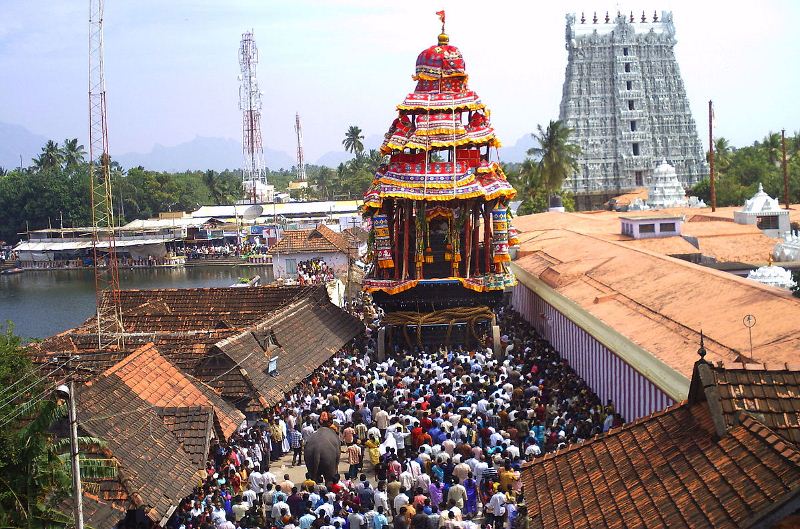
In the agraharams (dwellings of Brahmins) you can listen to Lalita Sahasra Naamam. All the homes are uniformly arranged with a unique pattern. In front of the homes built as rows, rice Kolam is quite common. You can see similar homes around Suchindram temple and its premises.
From BC 1500 onwards, Chariot festivals are quite famous, as per history books. 2 Ganesha chariots, Periya Ratham with Siva and Parvaty residing together (of big size) and a few more small chariots together participate in the eve. 3 or 4 chariots can travel at the same time through the temple paths. It’s believed that pulling chariots of Lords can get rid of sins. It’s a grand festival eve for all the locals of Suchindram, and most families gather together at their ancestral homes for the celebrations. People staying at abroad also reach there. Many believe that pulling chariot is an essential part of their lives.
Earlier it was not permissible to stop pulling chariots in the middle. The law was changed later. Festivals are conducted as per Tamil calendar and during Margazhi, Chithira and Avani months. Therottam (Chariot festival) is conducted during Margazhi. Earlier chariots used to ‘fly in air’, that was the speed with which they were pulled. Today man is not healthy as before and hence slowed down.
‘Suchindran Kaimukk’ – Punishment to test the virtue
There existed some notorious and evil judgments in the yesterdays during royal rule. Hand was dipped in hot ghee to know if a person is culprit or not, where judgment was given by inner soul. Fearing those severe punishments, people lived with virtue. This test, which can be better tagged as punishment known by the name, ‘Kaimukk’ (literally – dipping hands) was practised in many temples across Kerala. ‘Suchindran Kaimukk’ was top among all. It was carried under the strict examination of Travancore kings, and a rare punishment too.
‘Suchindran Kaimukk’ was approved and believed by all. It was believed that an innocent man will never be punished by Lord Suchindranathan. The process was carried out under the instructions of elder member of Vattapalli Illam. In the history books of Suchindram, detailed description is given about this punishment. The punishment has been carried out to solve the mystery of robbery, murder and adulteration.
It lasts for 1 week and the punishment is conducted on final day. A psychological approach to the accused, it gives 7 long days for him to accept the sin if he has committed. If so, Kaimukk punishment won’t be given. In many cases, the accused has accepted the crime too. On the final day, the accused is taken to Palayar river for a bath, and it gives him last opportunity to accept the crime.
Ghee boils in a big bowl and Vattapalli Moothath (senior person of the madam) dips a silver Vrishabha idol in it. The silver idol reaches the bottom of the boiling pot and the accused has to find it using his hands. A banana leaf is placed near to the pot and he has to place the statue in it. Then he circumvallates the temple once, and beneath the flag post, Vattapalli Moothath wraps his hand with white cotton. After such complex rituals, on third day, Vattapalli Moothath checks his hands again. If hand has turned black, the accused has indeed committed the crime. Otherwise he will be acquitted of all charges and given a grand welcome by all.
Immersing hand to boiling ghee was a fierce punishment, quite common in royal days. But it’s basic principles are linked to the belief in god, fear towards his judgment and the true call of inner soul. As everyone feared about such a punishment, it helped the establishment of law and order in the state – testimony given by old people. It might be surprising to present generation Suchindram history books hold the record of many accused, who have left the temple, without even a single scar!
As per British, Kaimukk is an unscientific punishment. Many accused have even drowned themselves and committed suicide in the temple pond during their stay at the temple for 7 days before the punishment is carried out. During the reign of Swati Thirunal, this punishment was abolished.
Thiruvathira celebration of Markazhi month
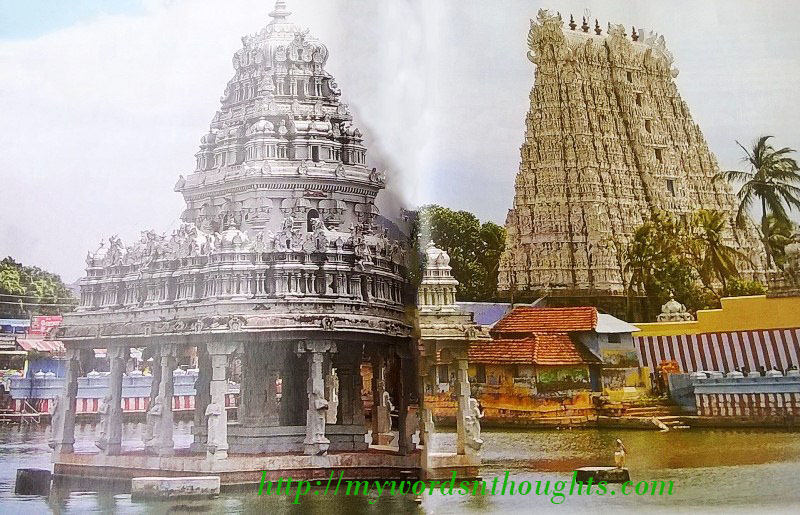
Thiruvathira day was celebrated in a grand manner during Markazhi month. During temple processions of royal rule days, Devadasis danced in the front row. They stayed in the temple premises during the festival season, and celebrated the eve with dance and songs. Only devadasis owned the right to take gold and silver ornaments from lord’s abode. Yes, they were treated with divinity and given special treatments once. But as time passed by, they lost their glory and remained as just dancers or sex workers.
When you stand above the temple gopuram, you can see deep blue Kanyakumari seas at distance. Deep sea blowing its blue pallu, prosperity of green lands and fields, isolated barren lands and a few more sights – Suchindram offers many pleasant sights for you. Palayar river silently flows through the region, and the stone pillars sing very often. A few memories from past, a little bit music and a few emotions too, Suchindra temple is a lovely place to stay for a while and watch.
How to reach Suchindram?
Suchindram is situated in Kanyakumari district of Tamil Nadu, in between Kanya Kumari and Nagercoil. From Thiruvananthapuram, it’s 81 kms away. Nagercoil is the nearby railway station and Thiruvananthapuram international airport is the nearest airport. Tutucorin domestic airport is also near. You can’t find good accommodation at Suchindram, and you can stay at Nagercoil (8 kms) or Kanyakumari (18kms). The temple is governed by Tamil Nadu devaswom.
Image source: Wikipedia
Also read a few more articles on temples of Kerala. Click on the images in the gallery to read

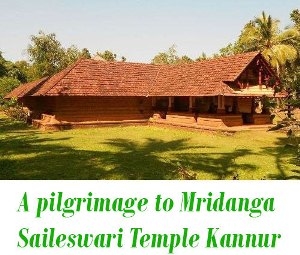
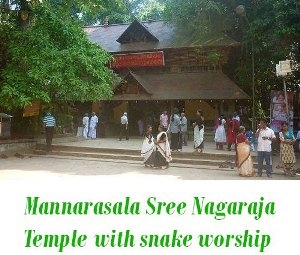
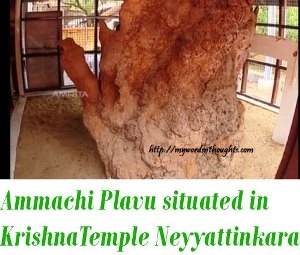
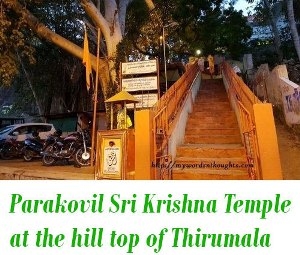
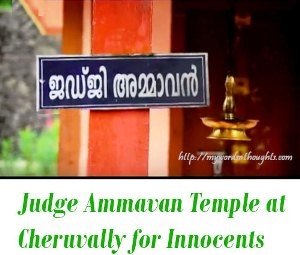
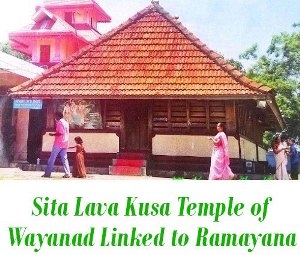
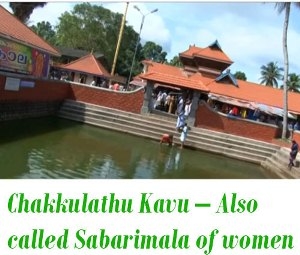
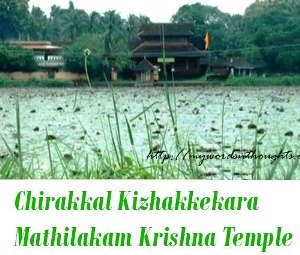
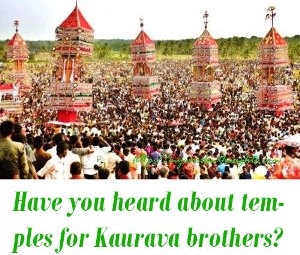
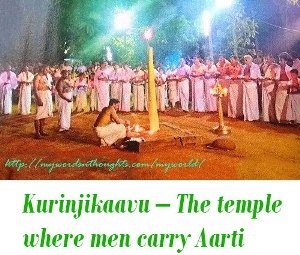
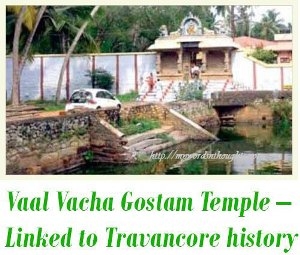
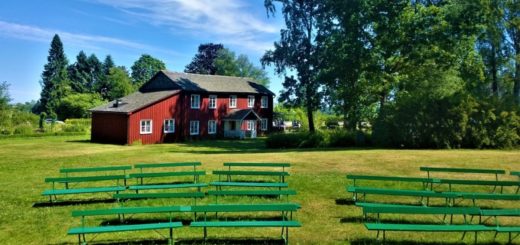












Wow great!!You have covered many things here. Nice read.
Thank u, please share with your friends